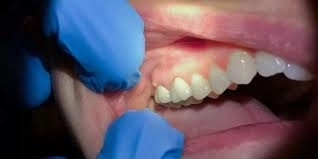
How Is a Dental Abscess Surgically Treated? A Comprehensive Guide
Published on: 2025-06-17 | Written by: Dr. Ziad Al-Qat, Oral and Dental Surgeon
A dental abscess is one of the most common urgent cases in oral medicine. It is a bacterial infection that accumulates as pus around the tooth root or gums. If not treated promptly, it can cause serious complications, including spreading the infection to the jaw or even the bloodstream.
In this article, Dr. Ziad Al-Qatt, Consultant Oral and Dental Surgeon, provides a comprehensive guide on how a dental abscess is surgically treated and the steps followed to ensure complete healing and safe, effective pain relief.
What is a Dental Abscess?
A dental abscess is a pus-filled swelling caused by a bacterial infection, usually resulting from:
-
Untreated deep tooth decay.
-
Advanced gum diseases.
-
Tooth injury or fracture.
When Does a Dental Abscess Require Surgical Intervention?
Not all abscesses require surgery, but surgical intervention might be necessary if the following symptoms appear:
-
Severe swelling in the face or jaw.
-
Unbearable pain not relieved by painkillers.
-
Difficulty swallowing or breathing.
-
Recurring abscess or abscess not responding to antibiotics.
Steps of Surgical Treatment of a Dental Abscess with Dr. Ziad Al-Qatt
1. Clinical Evaluation and Imaging
The treatment begins with a thorough assessment, where Dr. Ziad Al-Qatt uses X-rays or CT scans to determine the extent of the infection.
2. Incision and Drainage
A small incision is made at the infected site to drain the pus, and the infected tissues are removed to prevent recurrence.
3. Cleaning and Disinfection
The infected pocket is cleaned with antibacterial solutions to ensure the elimination of any microbial residues.
4. Tooth Extraction (if necessary)
In some cases, the tooth cannot be saved and must be extracted to prevent worsening of the condition.
5. Gum or Root Surgery
If the infection involves the root or beneath the gum, surgery may be required to cleanse the affected area or perform advanced root canal treatment.
6. Follow-up and Antibiotic Prescription
Dr. Ziad Al-Qatt provides careful follow-up after surgery with appropriate medication to speed healing and prevent new infections.
Important Post-Surgery Tips
-
Use cold compresses to reduce swelling.
-
Adhere strictly to prescribed antibiotics.
-
Avoid hot or hard foods.
-
Maintain oral hygiene and use antiseptic mouthwash.

